Lecture
IBM today is known to many. She left a huge imprint in computer history, and even today its pace in this difficult affair has not decreased. The most interesting thing is that not everyone knows what IBM is so famous for. Yes, everyone has heard about the IBM PC, about what it did laptops, that once it seriously competed with Apple. However, among the merits of the blue giant there is a huge amount of scientific discoveries, as well as the introduction of various inventions into everyday life. Sometimes, many wonder where this or that technology has come from. And all from there - from IBM. Five Nobel laureates in physics received their awards for inventions made within the walls of this company.
This material is intended to shed light on the history of the formation and development of IBM. At the same time we will talk about its key inventions, as well as future developments.
As if a well-fed, lazy giant, resting, but still looking around with one eye, IBM has been watching the development of computing equipment and input-output devices for some time, seemingly not reacting. Perhaps its leaders believed that when fundamentally new developments will be made by others, the company will be able to retain its position as a leader in the production of office equipment by simply adapting the new equipment to its profitable calculators on punched cards. Or maybe IBM executives were afraid to break the laws governing the pace of computer technology.
One way or another, but for a number of post-war years, IBM did not undertake any development in the field of computers, although it had previously participated in computer studies conducted at Harvard University and the Massachusetts Institute of Technology. Moreover, the company neglected the opportunity to buy Mauchly and Ekert before they turned to Remington Rand. IBM was considered so conservative that when one scientist, having left public service, decided to enter IBM, his colleagues warned him that “this card company will never make a single computer”.
However, few predictions are so far from reality. Throughout this period, hidden processes took place at IBM behind the scenes, and, oddly enough, it was the advances in the field of input-output devices that “woke up” the company. The company's engineers persistently sought to revive the administration’s interest in the computer revolution in progress, and finally, they managed to find an interested listener in the person of Thomas J. Watson, Jr., the vice-president of the company and the son of the chairman of its board. Watson Jr., a military pilot during the Second World War, was very impressed by the perfection of the radar and other military equipment he encountered in the army, and, obviously, he used all his influence to turn the company to face the latest advances in electronics .
By 1949, management had authorized work on the study of magnetic tape in order to find out the prospects for its use in office equipment systems, which brought the company huge profits. Some of the managers of the company doubted that the magnetic tape could be of any importance in the area of business machines - because unlike punched cards, which could be checked manually, magnetic tape testing required special equipment. In addition, IBM made huge investments - and it owned most of the patents - in the development of hardware on punch cards. However, research continued, and creating machines to test the capabilities of the magnetic tape, IBM engineers laid the foundations of its future in computing.

1952 In the IBM-701, the data was recorded on a plastic tape, which moved faster than a metal tape and to a lesser extent destroyed sensitive read-write heads.
In 1952, IBM introduced its first fully electronic digital computer, later named Model-701 (Model-701). Although punch cards were still used in this machine, it also included a whole range of new, promising I / O devices, including CRT monitors, high-speed line printers, and plastic tape drives. The first car was soon followed by the Model-702. Intended for widespread commercial applications, it provided options for entering data into a machine — from punched cards and from magnetic tape — as well as outputting information — to magnetic tape or to a printing device. By the mid-50s, the company's engineers had already been developing magnetic disks for storing information and the so-called data synchronizer, which controlled the interactions of computer peripheral devices and its central processor. Thus, the conservative giant and young science together stepped into the future.
Time of formation
Its origins IBM goes back to 1896, when decades before the first electronic computers appeared, the outstanding engineer and statistician Herman Hollerith founded the company for the production of calculating and analytical machines, dubbed TMC (Tabulating Machine Company). To this, Mr. Hollerith, a descendant of German émigrés, who was openly proud of his roots, prompted the success of his first calculating and analytical machines of his own production. The essence of the invention of the grandfather of the "blue giant" was that he developed an electrical switch to encode these figures. In this case, the information carriers were maps in which holes were punched in a special order, after which the punched cards could be sorted mechanically. This development, patented by Herman Hollerith in 1889, created a real sensation, which allowed the 39-year-old inventor to receive an order for the supply of his unique machines for the US Department of Statistics, which was being prepared for the 1890 census.
Herman Hollerith

The success was overwhelming: processing the collected data took only one year, unlike the eight years that it took the statisticians from the US Census Bureau to receive the 1880 census results. It was then that in practice the advantage of computational mechanisms in solving such problems was demonstrated, which largely predetermined the future “digital boom”. The money earned and the established contacts helped Mr. Hollerith in 1896 to create a TMC company. At first, the company tried to produce commercial vehicles, but in the run-up to the 1900 census, it was redeployed to the production of calculating analytical machines for the US Census Bureau. However, three years later, when the state-owned "manger" was covered, Herman Hollerith again turned his attention to the commercial application of his developments.
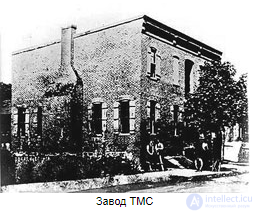
TMC Plant
Although the company experienced a period of rapid growth, the health of its creator and mastermind was steadily deteriorating. This forced him in 1911 to accept the offer of millionaire Charles Flint (Charles Flint) to buy TMC. The deal was valued at $ 2.3 million, of which Hollerith received $ 1.2 million. In fact, it was not a simple purchase of shares, but a merger of TMC with ITRC (International TimeRecording Company) and CSC (Computing ScaleCorporation) companies, which resulted in CTR (ComputingTabulating Recording) corporation. She became the prototype of modern IBM. And if Herman Hollerith is called by many the grandfather of the "blue giant", then Charles Flynt is considered to be his father.
Charles Flint

Mr. Flint, undoubtedly, was a financial genius who possessed the ability to foresee strong corporate unions, many of which outlived their creator and continue to play a decisive role in their fields. He took an active part in the creation of the pan-American manufacturer of rubber U. S. Rubber, one of the once-leading global manufacturers of chewing gum American Chicle (since 2002, being called Adams, is a member of Cadbury Schweppes). For his success in consolidating US corporate power, he was called the "father of trusts." However, for the same reason, the assessment of its role, in terms of positive or negative impact, but never in terms of significance, is quite unambiguous. Paradoxically, Charles Flint's organizational skills were highly valued in government departments, and he always found himself where ordinary officials could not act openly or their work was less effective. In particular, he is credited with participating in a secret project to buy up ships around the world and re-equip them into military ships during the Spanish-American War of 1898.
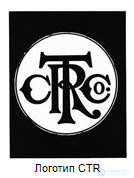
CTR logo
Created by Charles Flint, the CTR corporation in 1911 produced a wide range of unique equipment, including working time accounting systems, scales, automatic meat carvers and, which turned out to be especially important for creating a computer, punched card equipment. In 1914, Thomas Watson (Thomas J. Watson Sr.) took the post of general director, and in 1915 he became president of the CTR.
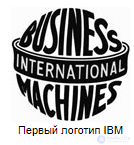
IBM's first logo
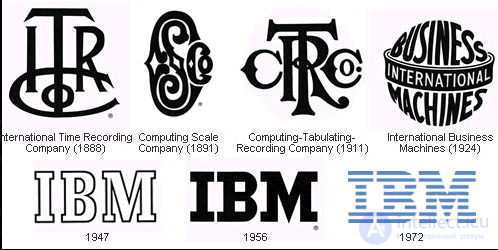
The next major event in the history of CTR was the change of name to InternationalBusiness Machines Co., Limited or IBM for short. It happened in two stages. First, in 1917, the company entered the Canadian market under this brand. It is evident that by this she wanted to emphasize the fact that she is now a real international corporation. In 1924, IBM became known as the American division.
The time of the Great Depression and the Second World War

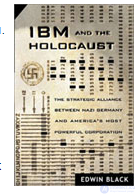
Ibm card
The next 25 years in the history of IBM were more or less stable. Even during the Great Depression in the United States, the company continued its activities at the same pace, almost without dismissing employees, which could not be said of other firms.
During this period, there are several important events for IBM. In 1928, the company has a new type of punch card with 80 columns. It was called the IBM Card and over the past few decades has been used by the company’s counting machines, and then its computers. Another significant event for IBM at this time was a large government order to systematize workplace data for 26 million people. The company itself recalls it as the "largest settlement transaction of all time." In addition, it opened the door for the blue giant to other government orders, just like at the very beginning of the TMC activity.

Automatic rifle
There are several references to IBM's collaboration with the fascist regime in Germany. The data source here is Edwin Black’s book "IBMand the Holocaust" ("IBM and the Holocaust"). Its name clearly states the purpose of the blue giant’s calculating machines. They kept statistics on imprisoned Jews. They even give the codes that were used to systematize the data: Code 8 - Jews, Code 11 - Gypsies, Code 001 - Auschwitz, Code 001 - Buchenwald, and so on.
However, according to IBM management, the company only sold equipment to the Third Reich, and how it was used further doesn’t concern them. So, by the way, did many American companies. IBM even opened a factory in Berlin in 1933, that is, when Hitler came to power. However, there is a downside to the use of IBM equipment by the Nazis. After the defeat of Germany, thanks to the machines of the blue giant, it was possible to trace the fate of many people. Although this did not prevent various groups of people affected by war and the Holocaust in particular, from demanding an official apology from IBM. The company refused to bring them. Even in spite of the fact that during the war its employees, who remained in Germany, continued their work, even communicating with the management of the company through Geneva. However, IBM itself disclaimed all responsibility for the activities of its enterprises in Germany during the war from 1941 to 1945.
In the United States, during the war period, IBM worked for the government and by no means always by its direct type of activity. Its production facilities and workers were engaged in the production of rifles (in particular, Browning Automatic Rifle and M1 Carbine), sights for bombing, spare parts for motors, etc. Thomas Watson, who was still at the head of the company, established a nominal profit of 1% for this product. And even this miser was sent not to the blue giant's piggy bank, but on the basis of a fund to help widows and orphans who lost their loved ones in the war.
Found application for counting machines located in the States. They were used for various mathematical calculations, logistics and other needs of the war. They were no less active in their work on the Manhattan project, in which the atomic bomb was created.
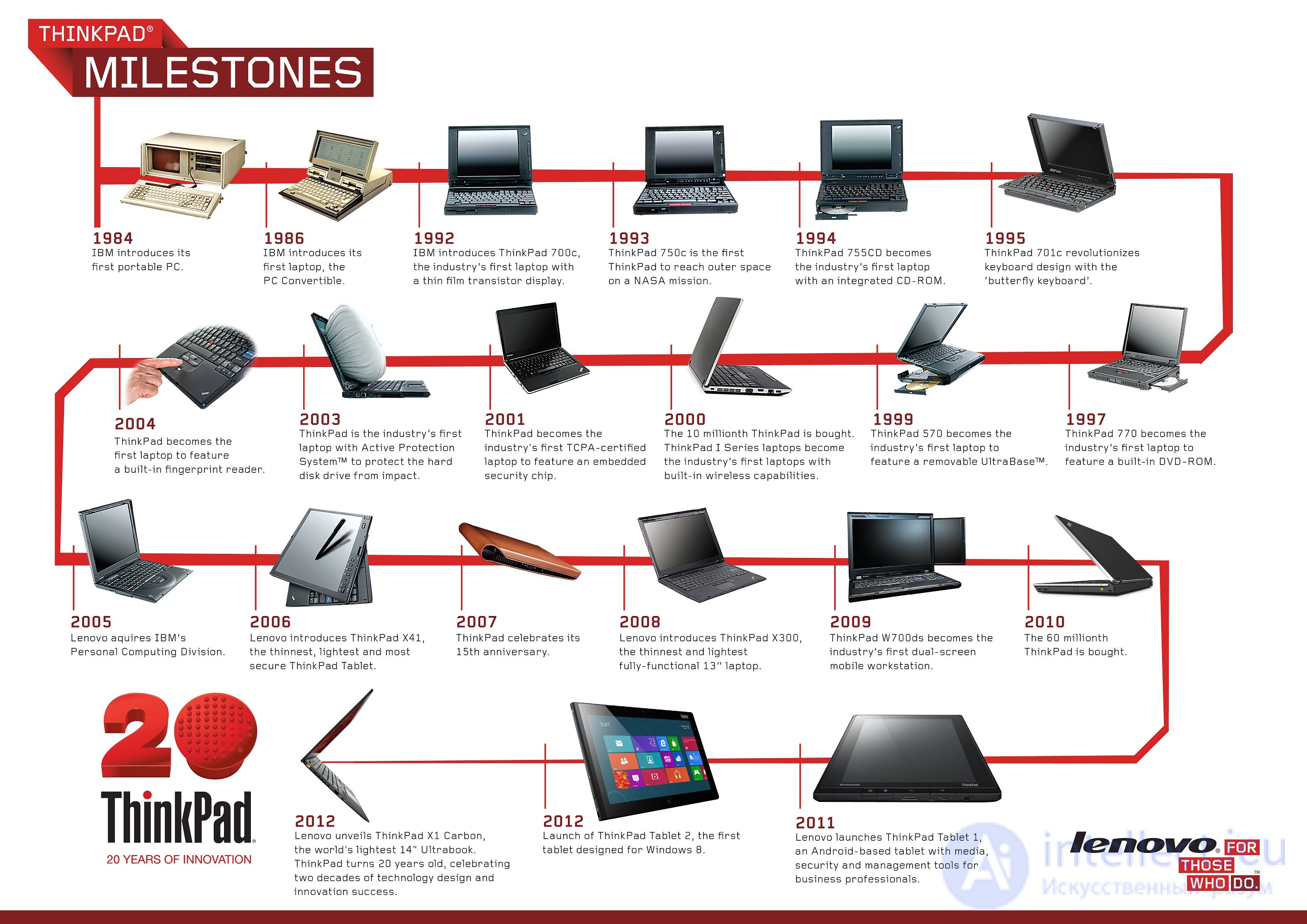
Comments
To leave a comment
History of computer technology and IT technology
Terms: History of computer technology and IT technology